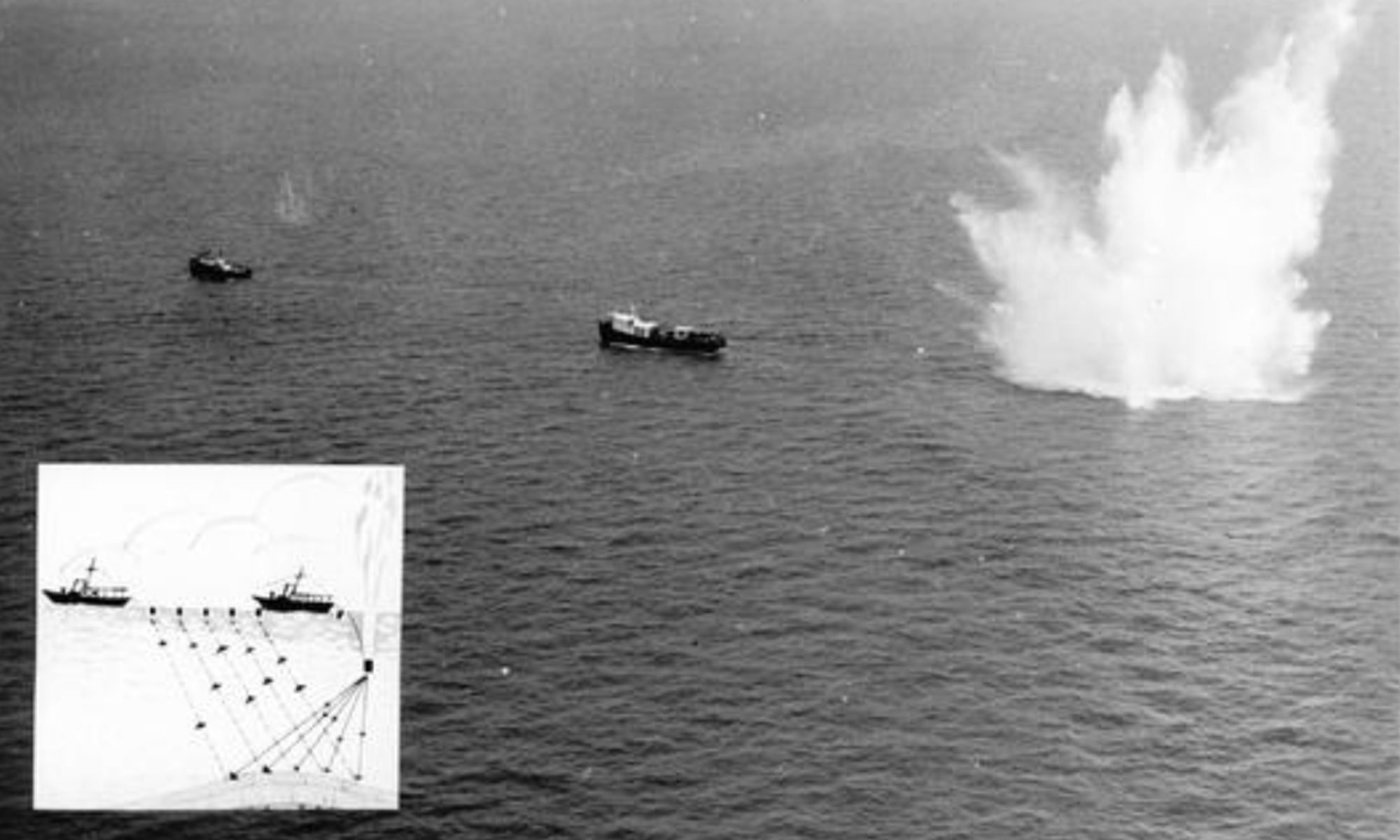Seismic surveys detect Frigg field

Geophysicist Jeanine Fontaine was asked to interpret the seismic data, which were fairly limited in those days. However, she was able to detect a structure which seemed promising. Because the formation was shaped like a pair of wings, Fontaine dubbed it “the Chinese butterfly“.[REMOVE]Fotnote: Elf Monthly, May 1985: Den kinesiske sommerfugl.
This was later changed to the Frigg . The seismic interpretations laid the basis for seeking blocks in this area during Norway’s second offshore licensing round in 1969.[REMOVE]Fotnote: F Heritier: Frigg field. History of the discovery
Seismic surveying involves mapping the underground using sound waves. These are generated by arrays of air guns towed behind the survey vessel, which “shoot” at roughly 10-second intervals with the aid of high-pressure air. Dynamite was often used in the 1960s. The sound waves echo back from the geological layers beneath the seabed, and these signals are picked up by hydrophone arrays and recorded on magnetic tape.
The hydrophones function as watertight microphones, attached to cables known as “streamers” and towed behind the survey ship. In this way, information about the Earth’s geological past is gathered and later interpreted by geophysicists.
The initial processing used to be transferred to large paper rolls in black-and-white, to be coloured by hand, and could be difficult to interpret. Four-dimensional interpretation methods have later been developed.
French oil mergerPutting a name to it